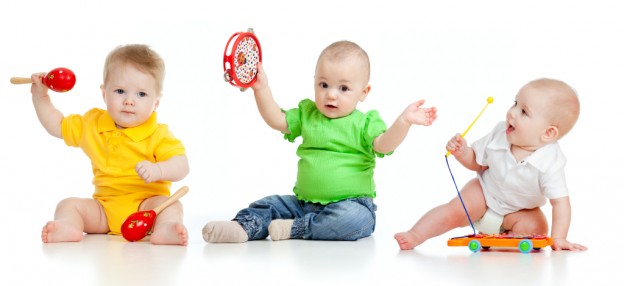
Products, Therapy Tips
How Music Can Help Children With Special Needs
Music surrounds us every day, coming to us from car radios, elevator speakers, the little voices of singing children, and countless other sources. However, music has value beyond entertainment – because of its effect on gross motor function, breathing, and self-regulation for children who struggle to speak, it has been used as a therapeutic tool for many years.How Music Affects the Brain
Music affects the right hemisphere of the brain, and there is evidence that rhythm and sound have an effect on sensory systems that, in turn, influence timing and muscle control. Studies also suggest that music can stimulate the neurons that deliver information to the brainstem and other parts of body. The inner ear is a powerful system that affects visual control, motor muscles in the mouth, and ability to self regulate.Entrainment
The human brain works off the theory of “entrainment.” When we hear or feel an external source of rhythm such as music, our bodies instinctively try to match our own rhythms to the beat. The beats per minute of a piece of music help give the body and brain different input. For example:- 130 beats per minute is great for high-intensity cardio.
- 100 beats per minute is best to help with attention to task.
- 60 beats per minute is good for before bed because it helps to return the body’s natural rhythm to a calm state.
Instrument Type Makes A Difference
The instruments used to create a piece of music also play a role in how we respond:- Large-body instruments like drums provide low-bass sounds that help us to organize and time our bodies.
- Instruments like the flute provide higher-frequency sounds that are often more associated with attention to task.
- Percussion and bass instruments provide rhythm.
- Guitar and cello-body instruments are calming and soothing.
- Flutes and voice call a person to attention and also affect emotions.
- Piano provides structure.
Where to Find Therapeutic Music
Music can help to provide an external way to provide calming and/or alerting input to children and adults. Here are some suggestions and resources for finding therapeutic music.- Vital Sounds has a wonderful collection of therapeutic support CDs.
- Genevieve Jereb, OTR, has a collection of fun movement CDs and cool bananas is a great calming CD.
- Sensational Kids is a CD full of sensory support songs.
- Sound-Ease is helpful for auditory orientation.
- Songames for Sensory Integration CD.
- Sound Health series of CDs for concentration, learning, thinking and productivity.
- Classical music like Mozart for attention.
- Instrumental soundtracks to child’s favorite movies for engagement.
- Nature sounds and drums are great for calming.



